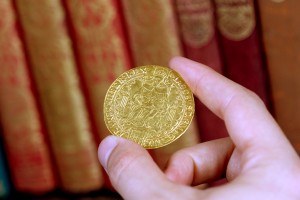History, Heroes and Heritage – Premium Collectibles Can Be a Strong Alternative Investment Option
By Keith Heddle, Managing Director of Stanley Gibbons Investments
Featured in this month’s Master Investor Magazine.
Stock market volatility is nothing new, be the cause the Euro crisis, Ukraine, the geo-political situation in the Middle East or the upcoming UK General Election in May. Investment options are then made harder with daily headlines of falling oil and commodity prices, currency fluctuations and potential cooling of property markets.
As a result of such constant uncertainty, particularly since 2008/09, alternative investments have become increasingly popular, as they can diversify risk exposure in an investor’s portfolio. By investing in tangible, heritage assets such as rare stamps and coins, investors can benefit from a stable anchor within their portfolio and a solid ‘buy and hold’ option.
Certain key premium collectibles have shown indications of being a strong, stable, safe haven investment through times of economic, social and political turbulence, which makes them an attractive diversification option for the longer term investor. In fact, owning something that is financially valuable, emotionally pleasing and culturally significant has been practiced by the wealthy for generations. The most comprehensive collection of British and British Commonwealth stamps is owned by Queen Elizabeth. Her grandfather, George V, started the collection, and unlike the Crown Jewels it belongs to the Queen herself, not the state. It is one of her largest personal assets.
Nowadays, it is more widely accepted that alternative investments can provide long-term benefits, including steady capital growth over time. Investment into the collectibles market is expanding, driven both by an increasing number of collectors from BRIC countries and investors looking to diversify and protect their wealth, resulting in a profitable and more liquid market.
Awarded the Royal Warrant for services to philately by King George V in 1914, Stanley Gibbons offers investors access to a range of premium, heritage assets from stamps, coins and military medals, to first edition books, limited edition prints and rare autographs and manuscripts. Its globally-recognised brand is synonymous with quality and expertise.
AH Baldwin & Sons, one of the oldest and most respected coin merchants in the world, offers collectors and investors access to the best in the rare coin market, whilst the recent acquisition of Mallett Antiques and Dreweatts & Bloomsbury Auctions completes the Stanley Gibbons Group.
A strong snapshot of the rare stamp and coin market is shown in Stanley Gibbons’ three indices, the GB30 Rarities Index, the GB250 Rare Stamp Index and the English Coin 200 Index, which are listed on the Bloomberg Professional® service and Thomson Reuters. The GB250 has never fallen in value and the GB30 has achieved a 40 year Compound Annual Growth Rate of 10.27%. At the height of the financial crisis, the GB30 Rarities Index actually rose by 38.6% and the GB250 by 32%; the English Coin Index also grew by 12.8% in 2008/9. Their strong, stable upward curves clearly show the lack of volatility, lack of correlation with other mainstream assets and healthy potential upside.
According to Knight Frank’s Luxury Investment Index, heritage investments have increased by 174% over the past 10 years, easily outstripping the FTSE 100’s 55% return over the same period. The other important point of note with the index is its volatility ratings. The most volatile asset over the last decade has been art. By contrast, rare coin and stamp prices have been less volatile than the index as a whole over the ten year period, providing stability as well as growth.
Besides Russian art, coins were the only other asset class to achieve double-digit growth in 2014 with gains of 13%. Indeed, in 2014 both stamps and coins set world records: A rare 1937 Edward VIII gold proof sovereign achieved £516,000 – the highest sum ever paid for a British coin – when auctioned by Baldwin’s; and the British Guiana 1c Black on Magenta set the world record price for a stamp, achieving $9.5m at auction in June.
Not only is the collectibles market strong in the UK but it is also growing worldwide. There is a continuous demand and interest for large denomination coins in the US, and an ever increasing global middle-class who want to buy back their heritage, combined with a growing collector base in strong emerging markets.
A report by Ledbury Research for Barclays, ‘Wealth Insights: Profit or Pleasure? Exploring the Motivations Behind Treasure Trends’, found that in 2012 wealthy individuals held on average 9.6% of their total net worth in treasure assets, although in some countries such as the United Arab Emirates, Saudi Arabia and China the figure was as high as 18%. The report also found that the proportion of wealthy individuals who own treasure assets has increased compared to five years ago.
According to Andrew Shirley, Editor of the Knight Frank Wealth Report, stamps are growing in popularity as a luxury investment vehicle in Africa, whilst of the estimated 60 million stamp collectors around the world, two thirds are based in Asia with approximately 20 million in China alone. In Australia, investors can even include collectible assets in their pensions via Self-Managed Super Funds.
With the UK Election looming and more potential market uncertainty to come, now could be a perfect time to allocate part of your investment portfolio to tangible assets like stamps and coins. As a former Head of Credit Suisse private banking described it, “They’re a classic ‘buy and hold’ investment”; an investment in history with a potentially strong upside.
When investing in stamps and coins, you own a slice of history; you become the owner of something physical and an important piece of world heritage, whether that’s a mint Penny Black, the world’s first ever pre-paid postage stamp, or a coin of Alexander the Great.
Tangible, heritage assets, which can be enjoyed as well as provide a potentially good return, are increasingly being used to spread risk in a diversified portfolio. Spreading that portfolio risk is undoubtedly the best advice of all, and if you get to enjoy it too – well that’s the icing on the cake.
To find out more, visit: www.sginvest.co.uk/master
0845 026 7170
investment@stanleygibbons.com



Comments (0)